FREQUENTLY ASKED QUESTIONS
-
They are all able to get you a policy with a carrier and get you the coverage you need to keep moving forward, however there are some big differences between them. As a consumer it is important to decide which would best fit your style and time. Let’s look at each.
Direct Writer:This is when you work directly with the carrier’s employees. There is no middleman. An example of this would be Geico or The General. This can seem like a cleaner process, and you have direct access to the carrier in a time of need. The downside is that you do not really have an advisor or someone on your side. If your interests in coverage, pricing, etc conflict with the carrier’s, you may not be getting the advice that is best for you.
Captive Agent:A captive agent is an agent who has a contract with one insurance company, such as State Farm. They only can provide you with coverage from one carrier. If you have a property that does not fit with their ideal, you may not be able to get a policy or be looking at higher premiums. The upside over Direct Writer is that you do have an agent that is there to be on your side.
Independent Agent:Independent Agents are like a captive agent, but that can access and have contracts with many insurance providers. They can work with you, your property, and your budget to find the best pricing. They are doing the work to find the correct coverage and pricing and saving you the headache, frustration, and time of trying to find a carrier. Independent agents are your guide, help you understand, and provide. Independent Agents own their own business separate from all insurance carriers. You are their client, and it is their mission to help you. You may be thinking that by adding a middleman you are having to pay more. That is not true, you can pay just as much or more with a direct writer and not get the same service.
To sum it up, we advise looking into each and see what best works for you and with you. -
The first named insured on the insurance policy is very important for many reasons. The most important is that they are granted certain rights on the policy, such as receiving returned monies, claims payouts, notice of cancellation, etc., that other named insureds will not receive or have access to. The first named insured also has obligations to the policy such as being financially responsible for paying premiums and complying with agreements and loss recommendations.
-
This is one of two primary methods used by carriers for establishing the value of a property. This is used in the event of a claim to determine what will be paid out on a claim to replace the damaged structure as it was before the loss. Meaning that using similar materials of similar quality. The payment will be for replacing the building in current market values with no deduction of depreciation. It will not better the property or bring it to current law or ordinances. It will replace the structure exactly as it currently stands.
-
Is another primary method used by carriers for establishing the value of a property. It is the value of replacement cost minus depreciation at the time of a claim. Unlike replacement cost, it does consider depreciation. The payout from a claim would be for the cost of damages or replacement of the property minus depreciation. It does not help in rebuilding the structure to its prior standing.
-
Renters insurance is a coverage that is used mainly by individuals who are leasing a property from another. This policy provides coverage to the individual's contents in the event of theft or fire or other loss. It does not cover the building since they do not own the building. A landlord’s policy does not cover the tenants’ belongings, so it is important to purchase a renter’s policy to cover their belongings. It also provides some liability coverage if someone is injured on your property. It is like a homeowner’s policy minus the building coverage.
-
Let’s start with the Wildfire score.
In most of the western states a property has a wildfire score that has been generated by a third-party company such as CoreLogic. The scores are generated based on the geographic location and the amount and type of fire fuels found in the area. The property is then provided a score from 5-100 with five being a minimal chance of fire to one hundred being an extremely high chance of wildfire. Their effort is to help insurance companies assess whether a property is likely to be involved in a wildfire or not.
How does this affect your insurance?
Carriers use this information to determine the property’s risk of being damaged or destroyed by a wildfire. Some carriers are unwilling to provide coverage to a property above a certain score. Some carriers have a separate and higher deductible for properties in high-risk areas. Carriers can also have higher rates for these areas. This could mean that an individual must go with the state alternative, California Fair Plan, to get some property coverage at all. Whatever the case is, your insurance agent can help you navigate this new industry outlook.
-
Not to be confused with coinsurance used in the medical field. When it comes to your building coverage, coinsurance works differently. Coinsurance is an agreement between you and the carrier to maintain the building value within a certain percentage of the total building value at the time of loss. If you do not maintain the agreed upon percentage or more of building coverage, you can be subject to a penalty. The carrier will only pay for the percentage insured for at time of loss and then it is up to the insured to pay the rest. For example, if you agreed to a 90% coinsurance but at the time of loss it was only insured for 80%, the carrier is only going to pay for 80% of the damage/replacement minus the deductible and then the individual or business must pay the rest. If at the time of loss, the building is insured at 90% the carrier would pay for the 100% replacement of the building. The coinsurance allows for the insured to save a little money and still be able to replace their building but only if they stay insured at the agreed percentage or more.
-
Generally, audits are only conducted on liability and workers comp policies. Most of these policies are usually rated based on a company’s gross sales or payroll. These figures by nature are fluid and changing. When your agent quotes this policy for you, you are usually asked to give as accurate an estimate as you can for the future 12 months of the policy. More payroll or gross sales means you had more exposure to liability risks and less payroll or gross sales means you had less exposure to liability risks. For the carrier to make sure you have the right amount of coverage and that they are charging you an accurate amount based on your exposure to possible liability claims, they audit your business. You may owe the carrier more money due to an increase in exposure or you may receive money back due to less exposure than anticipated. This helps make sure that carriers are collecting adequate premiums to pay out claims and that small businesses are not being over charged and large businesses are not being undercharged.
-
A third party that is not originally part of the policy who is added to the policy as an insured or additionally insured party to the policy at the named insured’s request. This is generally due to a contractual requirement with the third party. Additional Insured status offers the third-party protection under your policy while providing them a service or using a property of theirs. They are provided coverage under your policy for only as long as you are completing the service or using the property. Once the contract is complete, the coverage ends to that 3rd party.
-
This is also a coverage that is provided to a 3rd party at the request of the Named Insured. This is an agreement between the two parties to waive the right to pursue subrogation against the other party. Subrogation is the process of your carrier, who paid out on a claim, to receive compensation from the other party when it is found that the claim was not your negligence but theirs. The waiver is them, your carrier, giving up that right and paying for the claim without seeking the compensation from the other party or their insurance carrier.
